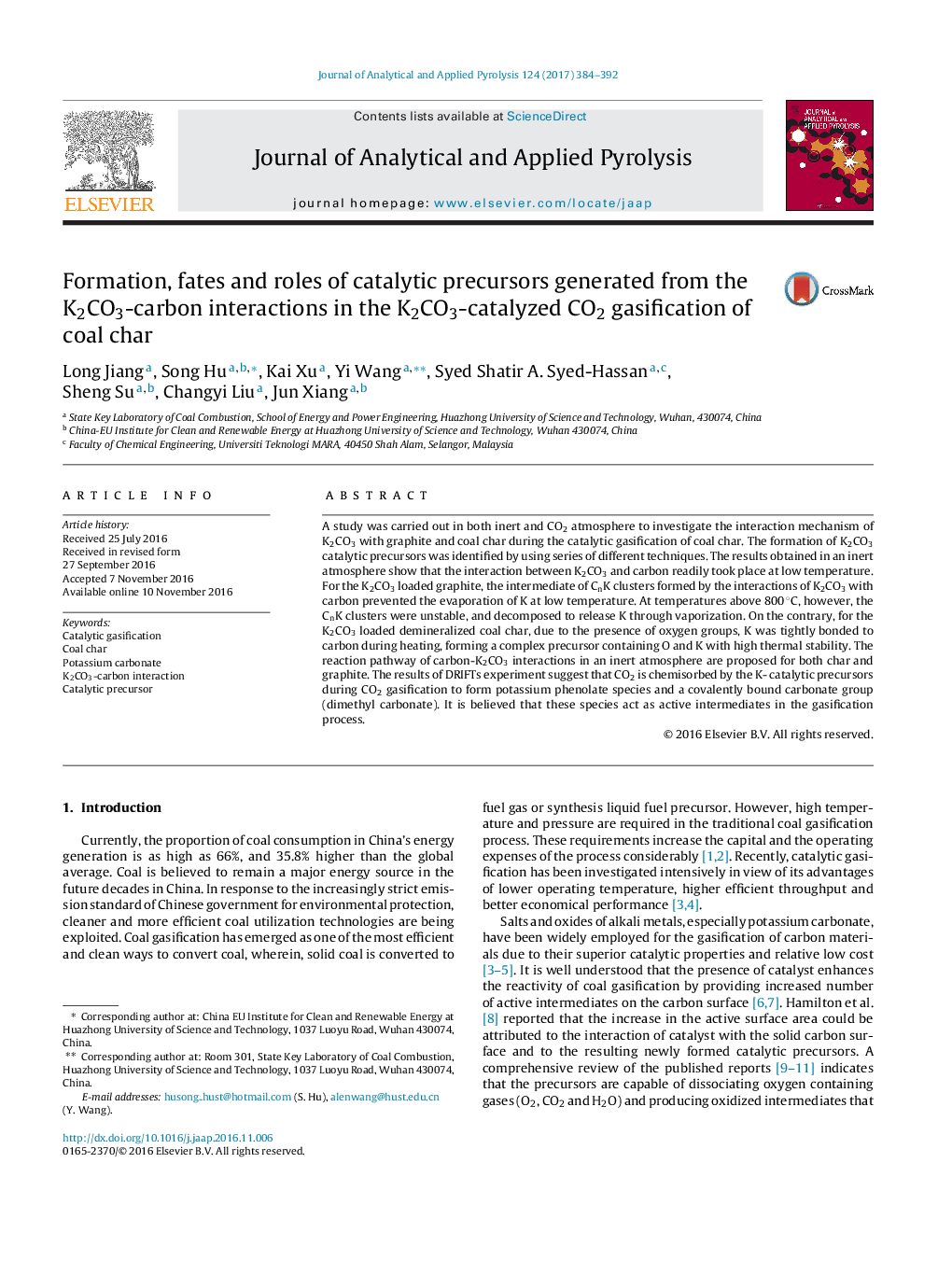| Article ID | Journal | Published Year | Pages | File Type |
|---|---|---|---|---|
| 5134610 | Journal of Analytical and Applied Pyrolysis | 2017 | 9 Pages |
•The interactions mechanism is significantly affected by presence of oxygen groups.•Coal char-K2CO3 and graphite-K2CO3 interaction undergo a different reaction pathway.•Graphite-K2CO3 interactions created a CnK cluster and cleaved at high temperature.•Char-K2CO3 interactions formed COK precursor with high thermal stability.•Potassium phenolate species and dimethyl carbonate acted as active intermediates.
A study was carried out in both inert and CO2 atmosphere to investigate the interaction mechanism of K2CO3 with graphite and coal char during the catalytic gasification of coal char. The formation of K2CO3 catalytic precursors was identified by using series of different techniques. The results obtained in an inert atmosphere show that the interaction between K2CO3 and carbon readily took place at low temperature. For the K2CO3 loaded graphite, the intermediate of CnK clusters formed by the interactions of K2CO3 with carbon prevented the evaporation of K at low temperature. At temperatures above 800 °C, however, the CnK clusters were unstable, and decomposed to release K through vaporization. On the contrary, for the K2CO3 loaded demineralized coal char, due to the presence of oxygen groups, K was tightly bonded to carbon during heating, forming a complex precursor containing O and K with high thermal stability. The reaction pathway of carbon-K2CO3 interactions in an inert atmosphere are proposed for both char and graphite. The results of DRIFTs experiment suggest that CO2 is chemisorbed by the K- catalytic precursors during CO2 gasification to form potassium phenolate species and a covalently bound carbonate group (dimethyl carbonate). It is believed that these species act as active intermediates in the gasification process.
